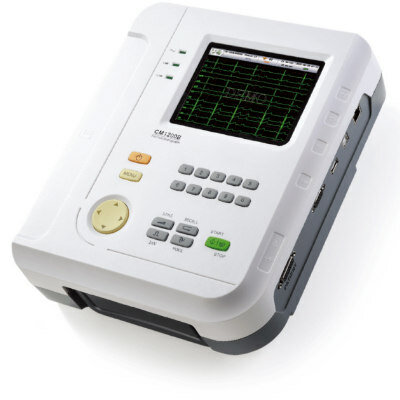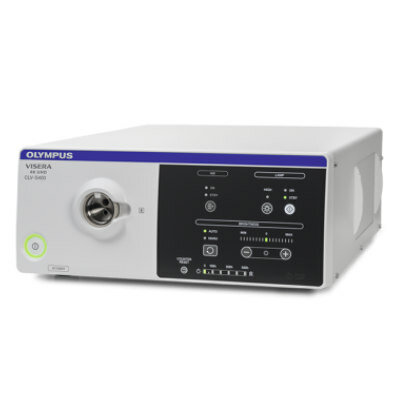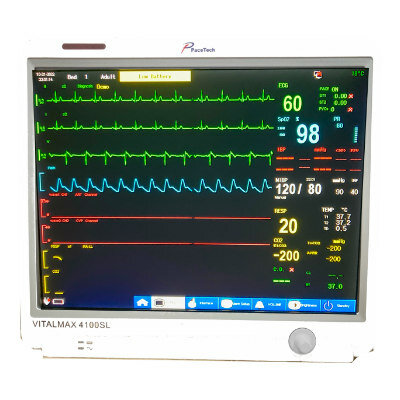AI Analytics Predict Daily Trajectory of COVID-19 Patients in Intensive Care Units
|
By HospiMedica International staff writers Posted on 12 May 2021 |

Illustration
Researchers have used artificial intelligence (AI) to identify which daily changing clinical parameters best predict intervention responses in critically ill COVID-19 patients.
Investigators at the Imperial College London (London, UK) used machine learning to predict which patients might get worse and not respond positively to being turned onto their front in intensive care units (ICUs) - a technique known as proning that is commonly used in this setting to improve oxygenation of the lungs. The prone position is used in ICUs to help improve blood oxygenation in people with severe acute respiratory distress syndrome, and has been used extensively during the pandemic. However, the study found that proning did not help all COVID-19 patients and, when used in patients who will not benefit, can delay the start of other sequential treatments like using extracorporeal membrane oxygenation (ECMO), a life-support machine that takes over for the heart and lungs to oxygenate blood and pump it round the body.
This was the first study that examines daily COVID-19 patient data, using AI to understand the clinical response to the rapidly changing needs of patients in ICUs. The researchers analyzed data from 633 mechanically ventilated COVID-19 patients across 20 UK ICUs during the first wave of the COVID-19 outbreak (1 March – 31 August 2020). They examined the importance of factors associated with disease progression, like blood clots and inflammation in the lungs, as well as treatments given and whether the patient ultimately died or was discharged. They used this data, which was collected daily by legions of medical students, nurses, doctors, audit, research and data staff, to design and train the AI tool which then made predictions on factors that determine outcomes.
The new findings showed that the AI model identified factors that determined which patients were likely to get worse and not respond to interventions like proning. The researchers found that during the first wave of the pandemic, patients with blood clots or inflammation in the lungs, lower oxygen levels, lower blood pressure, and lower lactate levels were less likely to benefit from being proned. Overall, proning improved oxygenation in only 44% of patients.
While the AI model was used on a retrospective cohort of patient data collected during the pandemic’s first wave, the study demonstrates the ability of AI methods to predict patient outcomes using routine clinical information used by ICU medics. The researchers say the approach, where each patient’s data were analyzed day-by-day instead of only on admission, could be used to improve guidelines in clinical practice going forward. It could be applied to potential future waves of the pandemic and other diseases treated in similar clinical settings.
The researchers continue to collect patient data and are currently analyzing findings from the second wave of the pandemic. They note that in the first wave there were limited drug treatments available, so more COVID-19 patients may have been triaged directly to ICU for breathing support. However, in the second wave, proven treatments such as steroids and tocilizumab were more widely available, so those who progressed to ICU had a different disease profile, as they were patients who were inherently resistant to these initial drug treatments.
“Advanced analytics to enable tracking of disease allows patient care to be streamlined so that the window of opportunity for any intervention is not missed,” said first author and clinical science lead Dr. Brijesh Patel, from Imperial’s Department of Surgery and Cancer and senior intensivist at Royal Brompton Hospital. “The data from this national evaluation enabled us not only to examine how our management decisions affected disease course but importantly where we could improve.”
“Our machine learning tool could help track patient progress in real time and help inform ICU guidelines by filling the gaps of patient care - reflecting back to clinicians to identify best practice quickly and benefit from sharing,” said senior author and data science lead Professor Aldo Faisal, Director of Imperial’s UKRI Centre for Doctoral Training in AI for Healthcare at the Departments of Computing and Bioengineering. “More than one year on, we’re still learning how the course of COVID-19 affects the body, and how this can change day-by-day. Data science and the daily data feeds from ICUs across the country help us learn much faster how best to treat individual patients based on their daily symptoms and needs.”
Related Links:
Imperial College London
Investigators at the Imperial College London (London, UK) used machine learning to predict which patients might get worse and not respond positively to being turned onto their front in intensive care units (ICUs) - a technique known as proning that is commonly used in this setting to improve oxygenation of the lungs. The prone position is used in ICUs to help improve blood oxygenation in people with severe acute respiratory distress syndrome, and has been used extensively during the pandemic. However, the study found that proning did not help all COVID-19 patients and, when used in patients who will not benefit, can delay the start of other sequential treatments like using extracorporeal membrane oxygenation (ECMO), a life-support machine that takes over for the heart and lungs to oxygenate blood and pump it round the body.
This was the first study that examines daily COVID-19 patient data, using AI to understand the clinical response to the rapidly changing needs of patients in ICUs. The researchers analyzed data from 633 mechanically ventilated COVID-19 patients across 20 UK ICUs during the first wave of the COVID-19 outbreak (1 March – 31 August 2020). They examined the importance of factors associated with disease progression, like blood clots and inflammation in the lungs, as well as treatments given and whether the patient ultimately died or was discharged. They used this data, which was collected daily by legions of medical students, nurses, doctors, audit, research and data staff, to design and train the AI tool which then made predictions on factors that determine outcomes.
The new findings showed that the AI model identified factors that determined which patients were likely to get worse and not respond to interventions like proning. The researchers found that during the first wave of the pandemic, patients with blood clots or inflammation in the lungs, lower oxygen levels, lower blood pressure, and lower lactate levels were less likely to benefit from being proned. Overall, proning improved oxygenation in only 44% of patients.
While the AI model was used on a retrospective cohort of patient data collected during the pandemic’s first wave, the study demonstrates the ability of AI methods to predict patient outcomes using routine clinical information used by ICU medics. The researchers say the approach, where each patient’s data were analyzed day-by-day instead of only on admission, could be used to improve guidelines in clinical practice going forward. It could be applied to potential future waves of the pandemic and other diseases treated in similar clinical settings.
The researchers continue to collect patient data and are currently analyzing findings from the second wave of the pandemic. They note that in the first wave there were limited drug treatments available, so more COVID-19 patients may have been triaged directly to ICU for breathing support. However, in the second wave, proven treatments such as steroids and tocilizumab were more widely available, so those who progressed to ICU had a different disease profile, as they were patients who were inherently resistant to these initial drug treatments.
“Advanced analytics to enable tracking of disease allows patient care to be streamlined so that the window of opportunity for any intervention is not missed,” said first author and clinical science lead Dr. Brijesh Patel, from Imperial’s Department of Surgery and Cancer and senior intensivist at Royal Brompton Hospital. “The data from this national evaluation enabled us not only to examine how our management decisions affected disease course but importantly where we could improve.”
“Our machine learning tool could help track patient progress in real time and help inform ICU guidelines by filling the gaps of patient care - reflecting back to clinicians to identify best practice quickly and benefit from sharing,” said senior author and data science lead Professor Aldo Faisal, Director of Imperial’s UKRI Centre for Doctoral Training in AI for Healthcare at the Departments of Computing and Bioengineering. “More than one year on, we’re still learning how the course of COVID-19 affects the body, and how this can change day-by-day. Data science and the daily data feeds from ICUs across the country help us learn much faster how best to treat individual patients based on their daily symptoms and needs.”
Related Links:
Imperial College London
Latest COVID-19 News
- Low-Cost System Detects SARS-CoV-2 Virus in Hospital Air Using High-Tech Bubbles
- World's First Inhalable COVID-19 Vaccine Approved in China
- COVID-19 Vaccine Patch Fights SARS-CoV-2 Variants Better than Needles
- Blood Viscosity Testing Can Predict Risk of Death in Hospitalized COVID-19 Patients
- ‘Covid Computer’ Uses AI to Detect COVID-19 from Chest CT Scans
- MRI Lung-Imaging Technique Shows Cause of Long-COVID Symptoms
- Chest CT Scans of COVID-19 Patients Could Help Distinguish Between SARS-CoV-2 Variants
- Specialized MRI Detects Lung Abnormalities in Non-Hospitalized Long COVID Patients
- AI Algorithm Identifies Hospitalized Patients at Highest Risk of Dying From COVID-19
- Sweat Sensor Detects Key Biomarkers That Provide Early Warning of COVID-19 and Flu
- Study Assesses Impact of COVID-19 on Ventilation/Perfusion Scintigraphy
- CT Imaging Study Finds Vaccination Reduces Risk of COVID-19 Associated Pulmonary Embolism
- Third Day in Hospital a ‘Tipping Point’ in Severity of COVID-19 Pneumonia
- Longer Interval Between COVID-19 Vaccines Generates Up to Nine Times as Many Antibodies
- AI Model for Monitoring COVID-19 Predicts Mortality Within First 30 Days of Admission
- AI Predicts COVID Prognosis at Near-Expert Level Based Off CT Scans
Channels
Artificial Intelligence
view channel
AI-Powered Algorithm to Revolutionize Detection of Atrial Fibrillation
Atrial fibrillation (AFib), a condition characterized by an irregular and often rapid heart rate, is linked to increased risks of stroke and heart failure. This is because the irregular heartbeat in AFib... Read more
AI Diagnostic Tool Accurately Detects Valvular Disorders Often Missed by Doctors
Doctors generally use stethoscopes to listen for the characteristic lub-dub sounds made by heart valves opening and closing. They also listen for less prominent sounds that indicate problems with these valves.... Read moreCritical Care
view channel
Deep-Learning Model Predicts Arrhythmia 30 Minutes before Onset
Atrial fibrillation, the most common type of cardiac arrhythmia worldwide, affected approximately 59 million people in 2019. Characterized by an irregular and often rapid heart rate, atrial fibrillation... Read more
Breakthrough Technology Combines Detection and Treatment of Nerve-Related Disorders in Single Procedure
The peripheral nervous system (PNS) serves as the communication network that links the brain and spinal cord to every other part of the body. It consists of two parts: the somatic nervous system, which... Read moreSurgical Techniques
view channel
Hydrogel-Based Miniaturized Electric Generators to Power Biomedical Devices
The development of engineered devices that can harvest and convert the mechanical motion of the human body into electricity is essential for powering bioelectronic devices. This mechanoelectrical energy... Read moreWearable Technology Monitors and Analyzes Surgeons' Posture during Long Surgical Procedures
The physical strain associated with the static postures maintained by neurosurgeons during long operations can lead to fatigue and musculoskeletal problems. An objective assessment of surgical ergonomics... Read more.jpg)
Custom 3D-Printed Orthopedic Implants Transform Joint Replacement Surgery
The evolving field of 3D printing is revolutionizing orthopedics, especially for individuals requiring joint replacement surgeries where traditional implants fail to provide a solution. Although most people... Read more
Cutting-Edge Imaging Platform Detects Residual Breast Cancer Missed During Lumpectomy Surgery
Breast cancer is becoming increasingly common, with statistics indicating that 1 in 8 women will develop the disease in their lifetime. Lumpectomy remains the predominant surgical intervention for treating... Read morePatient Care
view channel
Surgical Capacity Optimization Solution Helps Hospitals Boost OR Utilization
An innovative solution has the capability to transform surgical capacity utilization by targeting the root cause of surgical block time inefficiencies. Fujitsu Limited’s (Tokyo, Japan) Surgical Capacity... Read more
Game-Changing Innovation in Surgical Instrument Sterilization Significantly Improves OR Throughput
A groundbreaking innovation enables hospitals to significantly improve instrument processing time and throughput in operating rooms (ORs) and sterile processing departments. Turbett Surgical, Inc.... Read more
Next Gen ICU Bed to Help Address Complex Critical Care Needs
As the critical care environment becomes increasingly demanding and complex due to evolving hospital needs, there is a pressing requirement for innovations that can facilitate patient recovery.... Read moreGroundbreaking AI-Powered UV-C Disinfection Technology Redefines Infection Control Landscape
Healthcare-associated infection (HCAI) is a widespread complication in healthcare management, posing a significant health risk due to its potential to increase patient morbidity and mortality, prolong... Read moreHealth IT
view channel
Machine Learning Model Improves Mortality Risk Prediction for Cardiac Surgery Patients
Machine learning algorithms have been deployed to create predictive models in various medical fields, with some demonstrating improved outcomes compared to their standard-of-care counterparts.... Read more
Strategic Collaboration to Develop and Integrate Generative AI into Healthcare
Top industry experts have underscored the immediate requirement for healthcare systems and hospitals to respond to severe cost and margin pressures. Close to half of U.S. hospitals ended 2022 in the red... Read more
AI-Enabled Operating Rooms Solution Helps Hospitals Maximize Utilization and Unlock Capacity
For healthcare organizations, optimizing operating room (OR) utilization during prime time hours is a complex challenge. Surgeons and clinics face difficulties in finding available slots for booking cases,... Read more
AI Predicts Pancreatic Cancer Three Years before Diagnosis from Patients’ Medical Records
Screening for common cancers like breast, cervix, and prostate cancer relies on relatively simple and highly effective techniques, such as mammograms, Pap smears, and blood tests. These methods have revolutionized... Read morePoint of Care
view channel
Critical Bleeding Management System to Help Hospitals Further Standardize Viscoelastic Testing
Surgical procedures are often accompanied by significant blood loss and the subsequent high likelihood of the need for allogeneic blood transfusions. These transfusions, while critical, are linked to various... Read more
Point of Care HIV Test Enables Early Infection Diagnosis for Infants
Early diagnosis and initiation of treatment are crucial for the survival of infants infected with HIV (human immunodeficiency virus). Without treatment, approximately 50% of infants who acquire HIV during... Read more
Whole Blood Rapid Test Aids Assessment of Concussion at Patient's Bedside
In the United States annually, approximately five million individuals seek emergency department care for traumatic brain injuries (TBIs), yet over half of those suspecting a concussion may never get it checked.... Read more
New Generation Glucose Hospital Meter System Ensures Accurate, Interference-Free and Safe Use
A new generation glucose hospital meter system now comes with several features that make hospital glucose testing easier and more secure while continuing to offer accuracy, freedom from interference, and... Read moreBusiness
view channel
Johnson & Johnson Acquires Cardiovascular Medical Device Company Shockwave Medical
Johnson & Johnson (New Brunswick, N.J., USA) and Shockwave Medical (Santa Clara, CA, USA) have entered into a definitive agreement under which Johnson & Johnson will acquire all of Shockwave’s... Read more

















